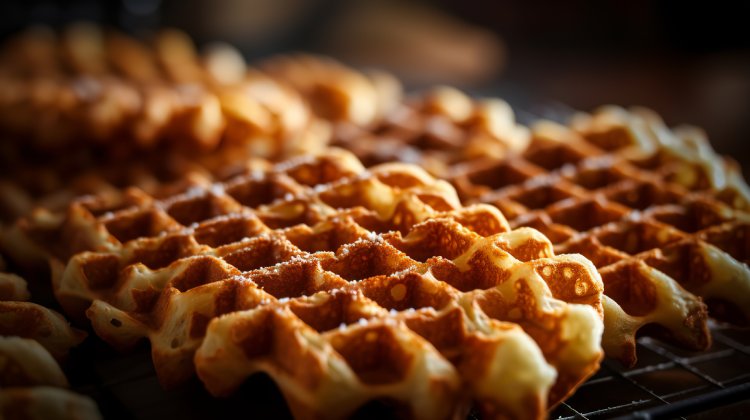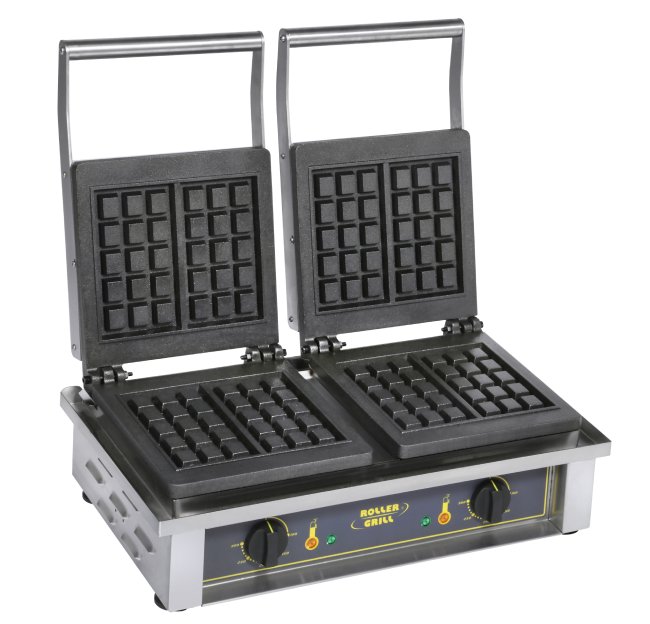Many cafes, restaurants and catering businesses are seeking to simplify their menus while offering the tasty treats their customers desire. Crispy, fluffy waffles are a favourite among consumers and an excellent way to increase sales.
Waffle batter is quick and easy to make, and commercial waffle makers are straightforward to operate. They can be made of various types of material, each with its advantages and disadvantages. And each type requires a different method when it comes to cleaning up.

Types of commercial waffle makers
1. Cast Aluminium
If the waffle maker plates are made of cast aluminium, you must season them with a non-stick spray that is safe for consumption. First, clean the grids, then wait 30 minutes before applying the spray. Then heat the waffle maker for 30 minutes before using it. It is advisable to season cast aluminium grids regularly.
Doing this will ensure that the waffles don't stick and the batter is easy to clean off.
If a build-up of non-stick spray occurs, avoid using harsh brushes or metal scrapers to clean it. Aluminium is a soft metal and can easily be dented or scratched.
2. Cast Iron
Cast iron is the most durable material. Before its first use, you should season a cast iron waffle maker following the steps above. Once seasoned, cast iron grids become non-stick. However, it's still recommended to season it periodically.
3. Cast Steel
Cast steel waffle makers are often considered the easiest to maintain. Cast steel is scratch resistant, dishwasher-safe and very durable.
4. Non-stick
Non-stick waffle makers are the easiest to clean and don't need seasoning before use. Avoid using metal utensils when cooking your waffles or cleaning them, as they will damage the surface. Instead, use plastic or silicone tools to scrape away any debris.

How to clean a waffle maker
Let your commercial waffle maker cool down completely before starting to clean it, but don't wait too long, or the batter will stick to the appliance. So it's best to establish a routine of cleaning up as soon as it's cool after using it. Here's a step-by-step guide on how to do it:
- Read the manufacturer's instructions for the commercial waffle maker before cleaning.
- Wipe down the plates with a damp cloth or paper towel.
- Remove any crumbs with a soft kitchen brush and use a rubber or silicon spatula to pick out any pieces of batter that are stuck.
- A little cooking oil can help with stubborn areas - pour on the oil, wait a few minutes, and then wipe off using a soft microfibre cloth.
- Avoid scouring pads or steel wool, which could damage the waffle maker.
- You can soak removable plates for a more thorough cleaning, but don't submerge the entire machine if it is electric.
- Clean the outside with a damp cloth and thoroughly dry the commercial waffle maker before storing.
- If you find oil collects in the grid, take a chopstick or pencil and wrap a scrap of paper towel around it. Moisten the paper with white vinegar and use it to wipe away any residue or oil or residue that has built up in the squares.
